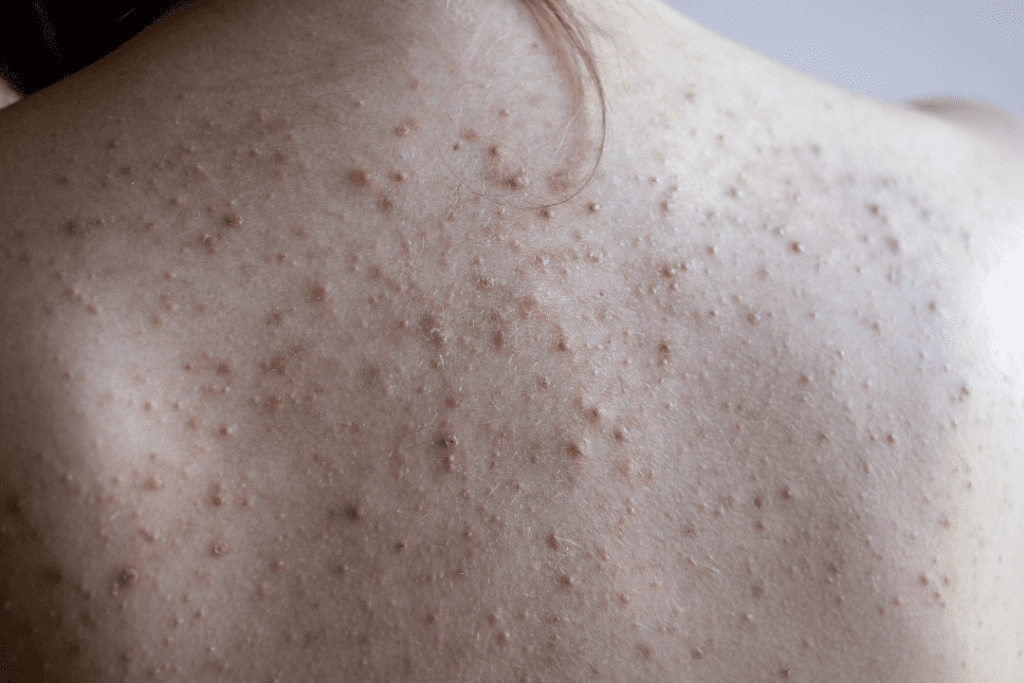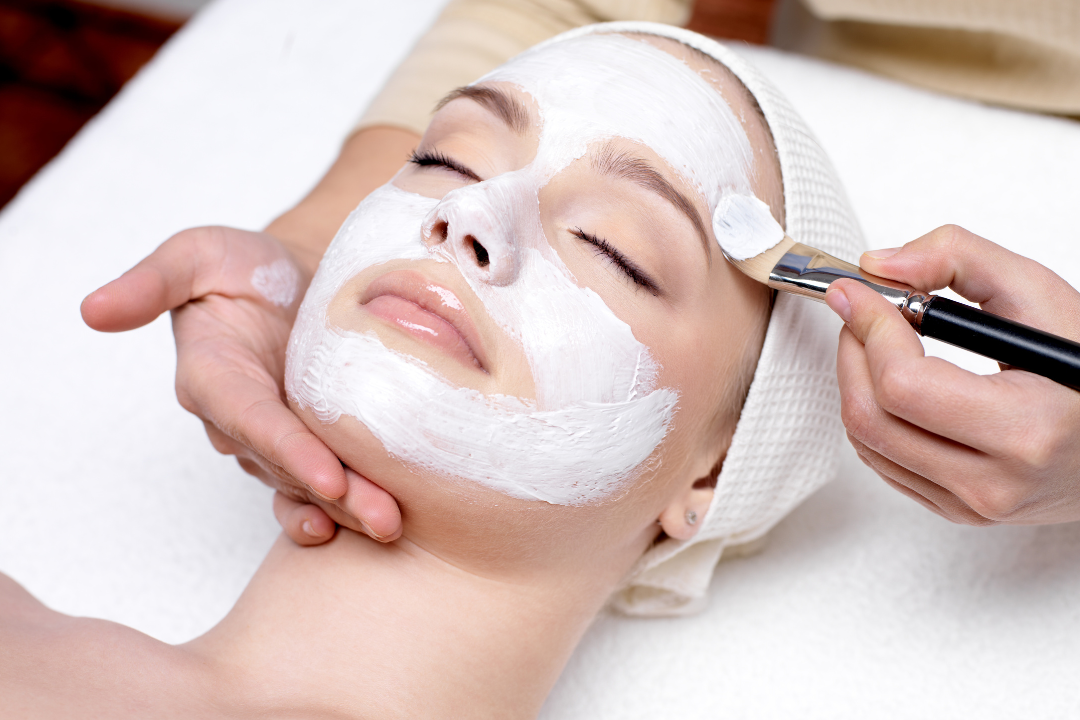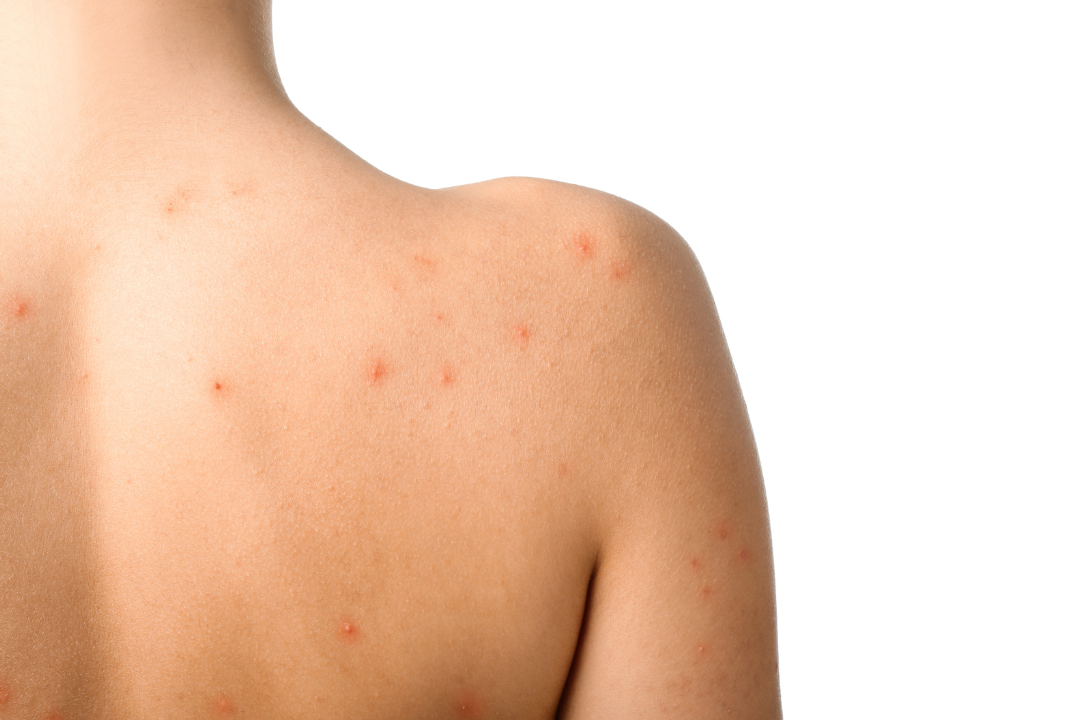Ever wondered why those pesky pimples seem to favour your chest and back? You’re not alone. Chest breakouts and back acne are more common than you might think, affecting both men and women alike. But what causes these bothersome blemishes, and how can you banish them for good?
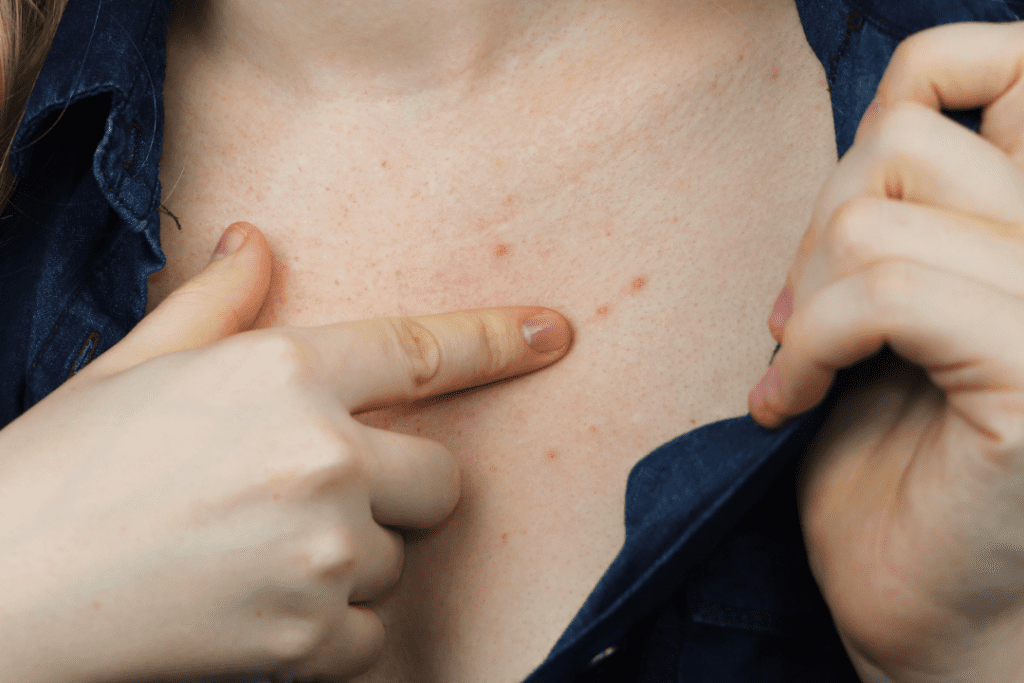
Body acne can be a real confidence killer, especially during swimsuit season. Whether you’re dealing with a chest breakout or persistent back acne, understanding the causes and solutions is key to achieving clear, healthy skin. At OasisMD in Vancouver, we’re here to help you tackle these skin challenges head-on.
From hormonal fluctuations to lifestyle factors, the reasons behind chest and back acne are diverse. But don’t worry – with the right approach, you can say goodbye to those unwanted blemishes and hello to smooth, acne-free skin.
Key Takeaways
- Chest and back acne are common skin issues affecting both genders
- Body acne can be caused by hormones, lifestyle, and skincare habits
- Understanding the triggers is crucial for effective treatment
- Proper skincare routines can help manage and prevent breakouts
- Professional help is available for persistent acne problems
Understanding Chest and Back Acne
Chest and back acne can be tough to handle. These areas often get breakouts because of their unique traits. Let’s look into what causes these breakouts, the types you might see, and how to know if it’s acne or folliculitis.
What Causes Acne on the Chest and Back
Acne on the chest and back shares the same causes. Your skin has many pores that can get clogged with oil, dead skin cells, and bacteria. This mix leads to inflammation and breakouts. Sweating, tight clothes, and hormonal changes can make it worse.
Types of Acne That Appear on the Body
Body acne comes in different forms. You might see:
- Blackheads: Open pores filled with debris
- Whiteheads: Closed pores with trapped oil
- Pimples: Red, inflamed bumps
- Pustules: Pus-filled bumps
- Cysts: Deep, painful lumps under the skin
Differentiating Between Acne and Folliculitis
It’s easy to mix up acne and folliculitis, but they’re not the same. Folliculitis is when hair follicles get inflamed, often from yeast or fungus. It can be itchy and may come back after being quiet for months. If you’re unsure, see a dermatologist at OasisMD in Vancouver for a correct diagnosis.
| Characteristic | Acne | Folliculitis |
|---|---|---|
| Cause | Clogged pores | Inflamed hair follicles |
| Appearance | Various types (blackheads, whiteheads, etc.) | Red, pus-filled bumps |
| Itchiness | Rarely itchy | Often itchy |
| Pattern | Constant presence | May flare up periodically |
Knowing the difference between acne and folliculitis is key for the right treatment. If you’re dealing with ongoing chest and back breakouts, contact OasisMD at 604 630 3833 or visit 8138 Granville Street, Vancouver BC for tailored care.
Common Triggers for Chest Breakouts
Knowing what causes chest acne can help you stop and manage breakouts. Many things can lead to acne on your chest, like your lifestyle and the environment.
Hormonal changes are a big factor in chest acne. These changes happen during puberty, menstruation, and pregnancy. They make your skin produce more oil, which can clog pores and cause pimples.
Excessive sweating is another common cause. Sweat and bacteria on your skin can create a perfect spot for acne. This is why you might see more breakouts after working out hard or when it’s very hot.
What you wear can also lead to acne. Tight clothes keep heat and moisture close to your skin, which can cause breakouts. Wearing loose, breathable clothes can help prevent this.
| Common Causes | How They Lead to Acne |
|---|---|
| Sugary foods | Spike blood sugar, increase inflammation |
| Sun exposure | Boosts oil production, clogs pores |
| Harsh skincare products | Irritate skin, disrupt natural balance |
| Dry skin | Triggers excess oil production |
Finding out what triggers your acne is key to managing it. If you’re dealing with ongoing breakouts, reach out to OasisMD at 604 630 3833 or visit their clinic at 8138 Granville Street, Vancouver BC. Their experts can create a plan just for you to tackle your skin issues.
The Role of Hormones in Body Acne
Hormones are key in causing acne on your chest and back. Knowing how they affect your skin can help you fight breakouts better.
Hormonal Fluctuations and Acne
Your hormone levels change throughout your life. These changes can make your skin produce more oil. This extra oil, when mixed with dead skin cells, can block pores and cause acne.
Menstrual Cycles and Chest Acne
Women often get chest acne during their menstrual cycle. Hormone changes can make you break out, especially before your period. This is a sign of hormonal acne.
Androgens and Body Acne
Androgens, like testosterone, play a big role in acne. They make your oil glands work too much, leading to more sebum. This can cause clogged pores and acne on your chest, back, and other body areas.
| Hormone | Effect on Skin | Impact on Acne |
|---|---|---|
| Testosterone | Increases oil production | Can lead to clogged pores |
| Estrogen | Balances oil production | May help reduce acne |
| Progesterone | Can increase oil production | May worsen acne before menstruation |
If you’re dealing with ongoing body acne, talk to a dermatologist at OasisMD. They can check if hormones are causing your breakouts and recommend treatments. Call them at 604 630 3833 or visit their clinic at 8138 Granville Street, Vancouver BC for personalized care.
Lifestyle Factors Contributing to Chest and Back Acne
Your daily habits greatly affect your skin’s health. Many lifestyle choices can lead to chest acne, but you can change that. Let’s look at common causes and how to avoid them.
Sweat is a big reason for chest acne. If you’re into sports, wash up right after you work out. Wearing sweaty clothes can cause bacteria to grow, leading to acne.
What you wear also plays a part. Tight, non-breathable clothes trap sweat and can irritate your skin. Choose loose, breathable fabrics like cotton to keep your skin comfortable.
- Avoid oil-based skincare products on your chest
- Check laundry detergents for irritating ingredients
- Skip perfumes or body sprays in acne-prone areas
What you eat and drink is key for your skin. Drinking lots of water helps clear out toxins. Some foods can cause breakouts, so watch what you eat and see how it affects your skin.
“Small lifestyle changes can make a big difference in managing chest acne. It’s about finding what works for your skin,” says Dr. Sarah Chen, dermatologist at OasisMD in Vancouver.
If you’re dealing with ongoing chest acne, getting expert advice is a good idea. OasisMD, at 8138 Granville Street, Vancouver BC, can offer tailored advice for your skin issues. Call them at 604 630 3833 or email [email protected] to set up a meeting.
Skincare Routine for Managing Chest Acne
A consistent acne skincare routine is key to fighting chest breakouts. Let’s look at how to keep your chest clear and healthy.
Cleansing techniques for acne-prone chest skin
Begin with a gentle cleanse. Use a body wash with salicylic acid to fight bacteria that cause acne. Clean your skin with your hands or a soft cloth in circular motions. Then, rinse with lukewarm water to prevent irritation.
Exfoliation: benefits and best practices
Exfoliate once a week to get rid of dead skin cells. This helps clear pores and stops new breakouts. Pick a chemical exfoliant with alpha-hydroxy acids (AHAs) or beta-hydroxy acids (BHAs). Be gentle when applying to avoid making acne worse.
Choosing the right moisturizer for chest acne
End your routine with a non-comedogenic moisturizer. It keeps your skin moist without clogging pores. Look for light, oil-free formulas with hyaluronic acid or niacinamide.
| Step | Product Type | Frequency | Key Ingredients |
|---|---|---|---|
| Cleanse | Acne-fighting body wash | Daily | Salicylic acid |
| Exfoliate | Chemical exfoliant | Weekly | AHAs or BHAs |
| Moisturize | Non-comedogenic moisturizer | Daily | Hyaluronic acid, Niacinamide |
For personalized skincare advice, visit OasisMD at 8138 Granville Street, Vancouver BC. Call 604 630 3833 or email [email protected] to book a consultation.
Effective Over-the-Counter Treatments
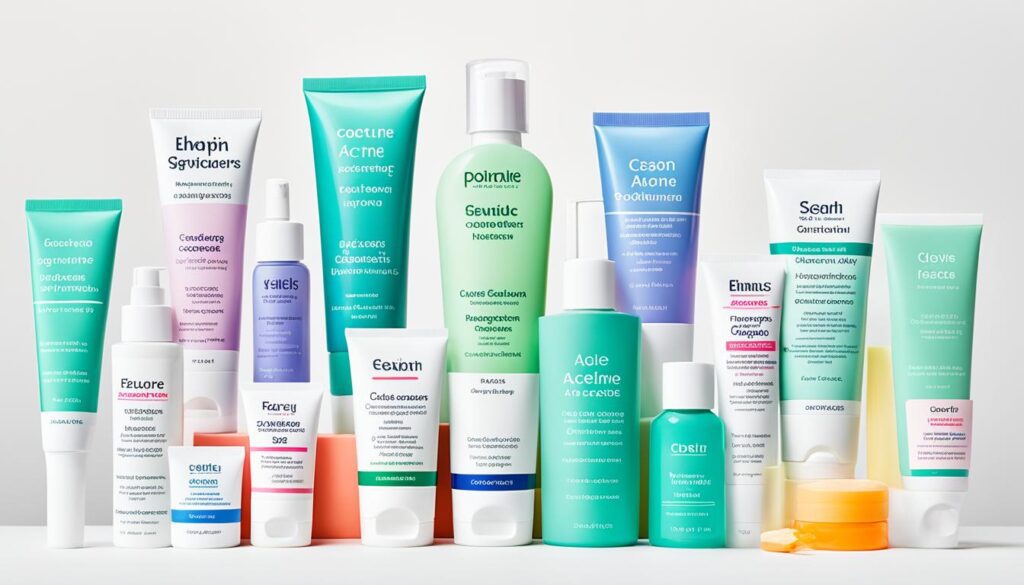
Dealing with chest and back acne can be tough. But, there are many over-the-counter options that can help. These products have ingredients that target the main causes of breakouts.
Salicylic acid and benzoyl peroxide are common in acne treatments. Salicylic acid helps by exfoliating the skin and clearing clogged pores. Benzoyl peroxide kills bacteria that cause acne and reduces swelling.
For mild to moderate chest acne, try a body wash or spray with these ingredients. Use it every day, focusing on the affected areas. Be patient, as it might take a few weeks to see results.
Topical retinoids, like adapalene gel, are great for body acne. They help control skin cell turnover and reduce inflammation. This leads to clearer skin over time.
- Use a gentle cleanser twice daily
- Apply acne-fighting ingredients like salicylic acid or benzoyl peroxide
- Consider topical retinoids for stubborn acne
- Be consistent with your skincare routine
If you’re having trouble finding the right acne treatment, OasisMD can help. They are at 8138 Granville Street in Vancouver, BC. Their team offers personalized advice for your skin concerns. Call them at 604-630-3833 or email [email protected] to book an appointment.
Natural Remedies for Chest Breakouts
Want to treat acne naturally? You’re in luck! Many home remedies can help soothe chest breakouts. These treatments often use items you might already have in your kitchen or bathroom.
Tea Tree Oil
Tea tree oil is a strong natural remedy for acne. It fights bacteria and reduces inflammation. Mix a few drops with a carrier oil and apply to affected areas. But be careful – always do a patch test first to avoid skin reactions.
Cinnamon and Honey Mask
A mix of cinnamon and raw honey can work wonders on chest acne. This sweet combo fights bacteria and calms angry skin. Apply the mask for 10-15 minutes, then rinse off with warm water.
Mud and Charcoal Treatments
Mud and charcoal masks are great for drawing out impurities from your skin. They can help soften and cleanse acne-prone areas. Apply a thin layer to your chest, let it dry, then wash off gently.
| Natural Remedy | Benefits | How to Use |
|---|---|---|
| Tea Tree Oil | Antimicrobial, reduces inflammation | Mix with carrier oil, apply directly |
| Cinnamon & Honey Mask | Fights bacteria, soothes skin | Apply for 10-15 minutes, rinse off |
| Mud/Charcoal Mask | Draws out impurities, softens skin | Apply thin layer, let dry, wash off |
Remember, what works for one person might not work for another. If your acne persists, consider visiting OasisMD at 8138 Granville Street, Vancouver BC. Call 604 630 3833 or email [email protected] for professional advice on treating chest acne.
When to Seek Professional Help for Chest Acne
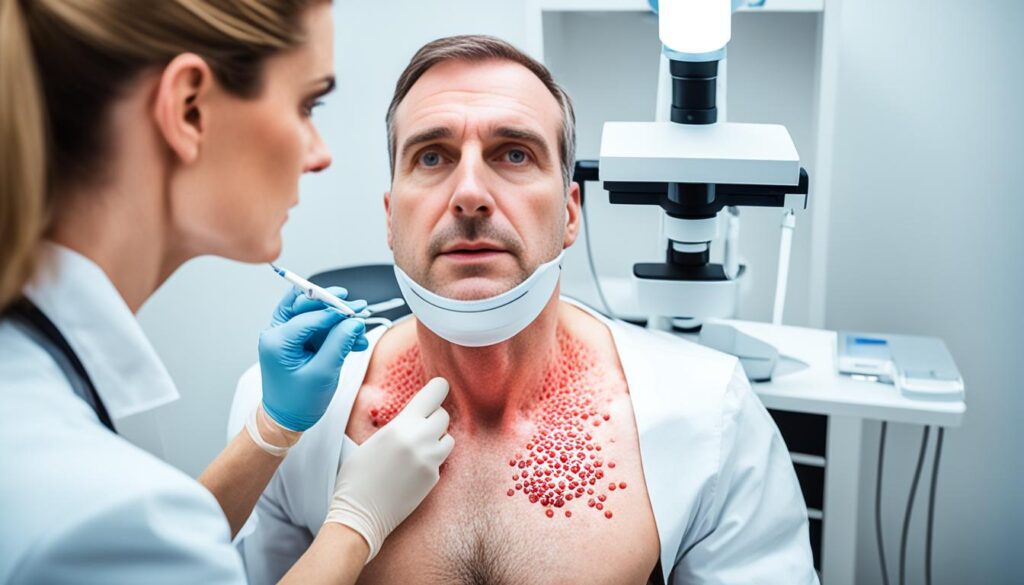
Chest acne can be tough, especially when it doesn’t go away with over-the-counter treatments. If you’ve tried these products without seeing results, it’s time to see a dermatologist. Signs like severe acne, ongoing breakouts, or feeling really down because of it mean you should get expert help.
A dermatologist can create a detailed treatment plan just for you. They can use stronger acne treatments and might prescribe oral antibiotics or isotretinoin for bad cases. Getting help early can stop scars and make you feel better about your skin.
At OasisMD in Vancouver, our dermatologists are here to help with your chest acne. We offer personalized care and the latest treatments to fix your skin problems.
| Signs to Seek Professional Help | Potential Professional Treatments |
|---|---|
| Severe, cystic acne | Prescription-strength topical treatments |
| Persistent breakouts | Oral antibiotics |
| Acne-related scarring | Isotretinoin (for severe cases) |
| Emotional distress | Chemical peels or laser therapy |
Don’t let chest acne take over your life. If you’re dealing with ongoing or serious acne, contact OasisMD at 604-630-3833 or visit us at 8138 Granville Street, Vancouver BC. Our team is ready to help you get clear, healthy skin.
Preventing Future Chest and Back Acne Outbreaks
To prevent acne and keep your skin healthy, you need a comprehensive approach. Let’s explore some effective ways to get rid of chest and back acne for good.
Dietary Considerations for Acne Prevention
What you eat plays a crucial role in skin health. To prevent acne, focus on a balanced diet rich in fruits, vegetables, and whole grains. Limit sugary and processed foods, as they can trigger breakouts. Some foods that may help keep your skin clear include:
- Omega-3 fatty acids (found in fish and flaxseeds)
- Zinc-rich foods (like pumpkin seeds and lean meats)
- Antioxidant-packed berries
Importance of Hydration for Skin Health
Staying hydrated is one of the best ways to get rid of acne. Drink plenty of water throughout the day to flush out toxins and keep your skin moisturized from within. Aim for at least 8 glasses of water daily to maintain healthy, clear skin.
Clothing Choices to Minimize Chest Acne
Your wardrobe can impact your skin health. To prevent acne on your chest and back, opt for:
| Do Wear | Avoid Wearing |
|---|---|
| Breathable, natural fabrics (cotton, linen) | Tight, synthetic materials |
| Loose-fitting clothes | Constrictive clothing |
| Moisture-wicking athletic wear | Sweaty clothes for prolonged periods |
Remember, consistency is key in preventing future outbreaks. If you’re struggling with persistent acne, consider reaching out to OasisMD at 604 630 3833 or [email protected]. Located at 8138 Granville Street, Vancouver BC, they can provide personalized advice to keep your skin clear and healthy.
Conclusion
Chest and back acne can be tough to deal with, but there’s hope. By understanding what causes it and trying different treatments, you’re on the right path. You can fight back with good skincare and making lifestyle changes.
Being patient is important when fighting body acne. Stick with your chosen treatments for the best results. If home remedies don’t work, it’s okay to get help from a pro. At OasisMD in Vancouver, our team offers personalized advice and advanced treatments for tough acne.
With the right steps and effort, you can get clear, healthy skin on your chest and back. For more details or to set up a meeting, contact OasisMD at 604 630 3833 or visit us at 8138 Granville Street, Vancouver BC. Your path to clear skin begins now!
FAQ
What causes acne on the chest and back?
Acne on the body happens when pores get clogged with oil, dead skin, and bacteria. Hormonal changes, sweating too much, wearing tight clothes, some foods, and skincare products can trigger it.
What are the different types of acne that can appear on the body?
You can get different kinds of acne on your chest and back. These include blackheads, whiteheads, pimples, pustules, and cysts.
How do I differentiate between acne and folliculitis?
Folliculitis is not the same as acne. It’s when hair follicles get inflamed by yeast or fungus. It can be itchy and stay quiet for months before it flares up again.
What are some common triggers for chest breakouts?
Chest acne can be caused by sugary foods, sunburn, dry skin, hormonal shifts, sweating a lot, tight clothes, and some skincare products.
How do hormones affect body acne?
Hormonal changes, like those in androgens like testosterone and DHT, can make your skin produce more oil. This can lead to acne. Women might get chest acne during their period due to these hormonal changes.
What lifestyle factors can contribute to chest and back acne?
Not washing after sweating, wearing tight or non-breathable clothes, using oil-based skincare, being exposed to laundry detergents or perfumes, not drinking enough water, and eating poorly can cause chest and back acne.
What should a proper skincare routine for managing chest acne include?
A good skincare routine should include washing daily with a body wash that fights acne, exfoliating gently once a week, and moisturizing with a non-comedogenic product.
What are some effective over-the-counter treatments for chest acne?
For mild to moderate chest acne, products with salicylic acid, benzoyl peroxide, or adapalene gel work well. Spot treatments can also target specific pimples.
What are some natural remedies for chest breakouts?
Using tea tree oil, a mix of cinnamon and honey, or mud or charcoal masks can help fight bacteria, reduce swelling, and clean out impurities.
When should I seek professional help for chest acne?
If your chest acne is bad, lasts a long time, or makes you feel really down, see a dermatologist. They can give you stronger treatments and figure out if it’s folliculitis.
How can I prevent future chest and back acne outbreaks?
To stop future breakouts, take good care of your skin, change your lifestyle (stay hydrated, wear loose clothes, shower after sweating), and eat well (avoid sugary foods, eat a balanced diet).

